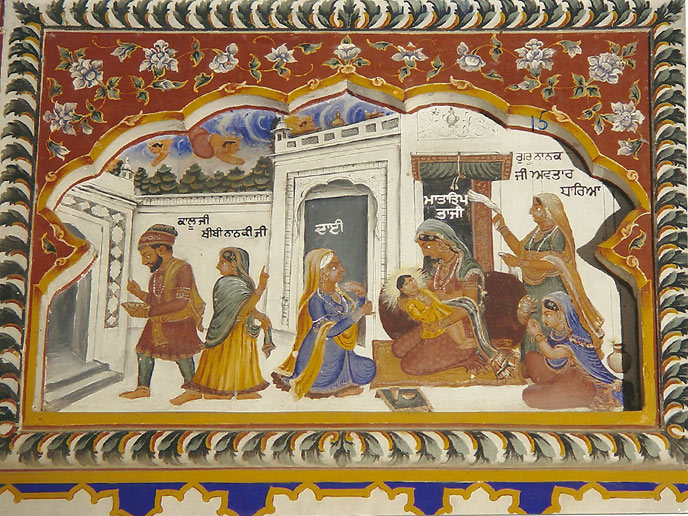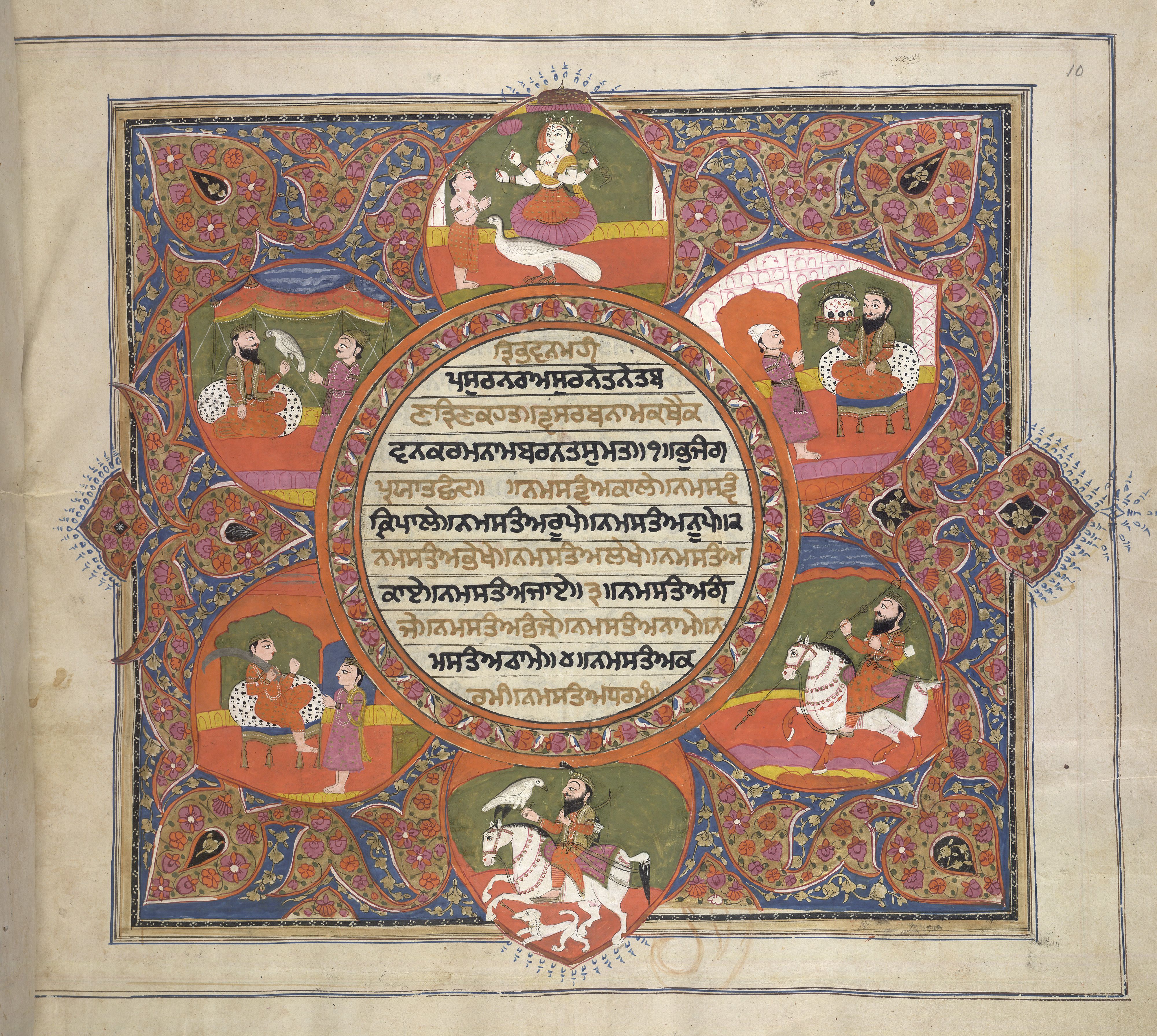GURU GRANTH SAHIB
The Guru Granth Sahib is not only the
 central religious Sikh
Scripture, but it is also known as the last and eternal Guru whose teachings
are followed by all Sikhists. Before the 10th Guru, Guru Gobind
Singh, appointed this scripture to be the last Guru, it was called the Adi
Granth, meaning “first scripture”. Once appointed as Guru in 1708, its name was
changed to Guru Granth Sahib. This scripture is a collection of the writings of
6 Guru’s and 21 other important followers who have become one with God. Guru
Granth Sahib contains 1430 pages of hymns about God written in Gurmukhi.
According to tradition, Guru Angad created the script and the script name,
Gurmukhi, means “from the mouth of the Guru”. In the Sikh’s eyes, the Granth is
a spiritual guide for all of mankind. Sikhists devote their lives to following
the path the Granth has presented to them.
central religious Sikh
Scripture, but it is also known as the last and eternal Guru whose teachings
are followed by all Sikhists. Before the 10th Guru, Guru Gobind
Singh, appointed this scripture to be the last Guru, it was called the Adi
Granth, meaning “first scripture”. Once appointed as Guru in 1708, its name was
changed to Guru Granth Sahib. This scripture is a collection of the writings of
6 Guru’s and 21 other important followers who have become one with God. Guru
Granth Sahib contains 1430 pages of hymns about God written in Gurmukhi.
According to tradition, Guru Angad created the script and the script name,
Gurmukhi, means “from the mouth of the Guru”. In the Sikh’s eyes, the Granth is
a spiritual guide for all of mankind. Sikhists devote their lives to following
the path the Granth has presented to them.
 central religious Sikh
Scripture, but it is also known as the last and eternal Guru whose teachings
are followed by all Sikhists. Before the 10th Guru, Guru Gobind
Singh, appointed this scripture to be the last Guru, it was called the Adi
Granth, meaning “first scripture”. Once appointed as Guru in 1708, its name was
changed to Guru Granth Sahib. This scripture is a collection of the writings of
6 Guru’s and 21 other important followers who have become one with God. Guru
Granth Sahib contains 1430 pages of hymns about God written in Gurmukhi.
According to tradition, Guru Angad created the script and the script name,
Gurmukhi, means “from the mouth of the Guru”. In the Sikh’s eyes, the Granth is
a spiritual guide for all of mankind. Sikhists devote their lives to following
the path the Granth has presented to them.
central religious Sikh
Scripture, but it is also known as the last and eternal Guru whose teachings
are followed by all Sikhists. Before the 10th Guru, Guru Gobind
Singh, appointed this scripture to be the last Guru, it was called the Adi
Granth, meaning “first scripture”. Once appointed as Guru in 1708, its name was
changed to Guru Granth Sahib. This scripture is a collection of the writings of
6 Guru’s and 21 other important followers who have become one with God. Guru
Granth Sahib contains 1430 pages of hymns about God written in Gurmukhi.
According to tradition, Guru Angad created the script and the script name,
Gurmukhi, means “from the mouth of the Guru”. In the Sikh’s eyes, the Granth is
a spiritual guide for all of mankind. Sikhists devote their lives to following
the path the Granth has presented to them.
Another religious text Sikhs follow is the Dasam Granth. It
is the second holiest text right behind the Guru Granth Sahib. It is said that
the content to this scripture differs from the Guru Granth Sahib. This
scripture contains 1428 pages of the daily prayers, divine verses, discussions
of the divine, hymns and the baptism ceremony. This religious text is also
written in Gurmukhi script.

JANAMSAKHIS
Lastly, the Janamsakhis are stories written about Guru Nanak’s life. Although not technically a scripture, it gives Sikh’s a foundation as to who and how Sikhism began. These writings were not written by Guru Nanak himself, but rather complied after his death by others. The most popular Janamsakhi is Bhai Bala Janamsakhi which was written by Bala Sandhu in 1592. Apparently, he was a close acquaintance of Nanak. However, there is much controversy about the legitimacy of the Janamskhis because a lot of the information provided is contradictory.

No comments:
Post a Comment